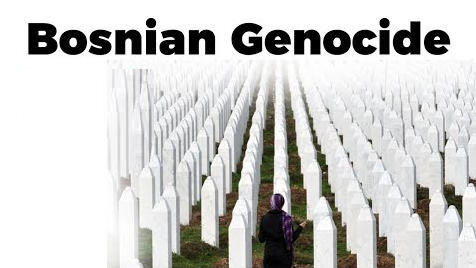Table of Contents


BACKGROUND
- In April 1992, the government of the Yugoslav republic of Bosnia-Herzegovina declared its independence from Yugoslavia.
- Over the next several years, Bosnian Serb forces, with the backing of the Serb-dominated Yugoslav army, perpetrated atrocious crimes against Bosniak (Bosnian Muslim) and Croatian civilians, resulting in the deaths of some 100,000 people (80 percent of them Bosniak) by 1995.
THE BEGINNING
- In Bosnia, Muslims represented the largest single population group by 1971. More Serbs and Croats emigrated over the next two decades, and in a 1991 census Bosnia’s population of some 4 million was 44 percent Bosniak, 31 percent Serb, and 17 percent Croatian.
- Elections held in late 1990 resulted in a coalition government split between parties representing the three ethnicities (in rough proportion to their populations) and led by the Bosniak Alija Izetbegovic.
THE STRUGGLE
- As tensions built inside and outside the country, the Bosnian Serb leader Radovan Karadzic and his Serbian Democratic Party withdrew from government and set up their own “Serbian National Assembly.”
- On March 3, 1992, after a referendum vote (which Karadzic’s party blocked in many Serb-populated areas), President Izetbegovic proclaimed Bosnia’s independence.
- In early May 1992, two days after the United States and the European Community (the precursor to the European Union) recognized Bosnia’s independence.
THE STRUGGLE
- Bosnian Serb forces with the backing of Milosevic and the Serb-dominated Yugoslav army launched their offensive with a bombardment of Bosnia’s capital, Sarajevo.
- They attacked Bosniak-dominated towns forcibly expelling Bosniak civilians from the region in a brutal process that later was identified as “ethnic cleansing.”
- Though Bosnian government forces tried to defend the territory, sometimes with the help of the Croatian army, Bosnian Serb forces were in control of nearly three-quarters of the country by the end of 1993, and Karadzic’s party had set up their own Republika Srpska in the east.
MASSACRE
- On July 11, 1995, however, Bosnian Serb forces advanced on Srebrenica subsequently separated the Bosniak civilians at Srebrenica, putting the women and girls on buses and sending them to Bosnian-held territory.
- Some of the women were raped or sexually assaulted, while the men and boys who remained behind were killed immediately or bussed to mass killing sites.
- Estimates of Bosniaks killed by Serb forces at Srebrenica range from around 7,000 to more than 8,000.
MASSACRE
- The ethnic cleansing campaign that took place throughout areas controlled by the Bosnian Serbs targeted Bosniaks and Bosnian Croats.
- The ethnic cleansing campaign included extermination, unlawful confinement, mass rape, sexual assault, torture, plunder and destruction of private and public property, and inhumane treatment of civilians; the targeting of political leaders, intellectuals, and professionals; the unlawful deportation and transfer of civilians; the unlawful shelling of civilians; the unlawful appropriation and plunder of real and personal property; the destruction of homes and businesses; and the destruction of places of worship
AFTERMATH
- In May 1993, the U.N. Security Council created the International Criminal Tribunal for the Former Yugoslavia (ICTY) at The Hague, Netherlands.
- It was the first international tribunal since the Nuremberg Trials in 1945-46, and the first to prosecute genocide, among other war crimes.
- Radovan Karadzic and the Bosnian Serb military commander, General Ratko Mladic, were among those indicted by the ICTY for genocide and other crimes against humanity.
BUTCHER OF BOSNIA
- The ICTY would eventually indict 161 individuals of crimes committed during conflict in the former Yugoslavia.
- In 2007, the International Court of Justice issued its ruling in a historic civil lawsuit brought by Bosnia against Serbia.
- After a trial lasting more than four years and involving the testimony of nearly 600 witnesses, the ICTY found Mladic, who had been dubbed the “Butcher of Bosnia,” guilty of genocide and other crimes against humanity in November 2017. The tribunal sentenced the 74-year-old former general to life in prison.
World History | Free PDF
























 WhatsApp
WhatsApp